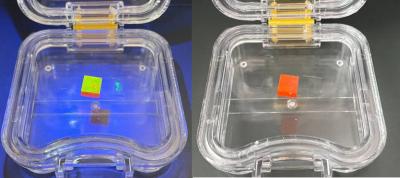Scientists at Russia's NUST MISiS, Moscow Institute of Physics and Technology, the Russian Academy of Sciences, RTU MIREA and Italy's CHOSE (Centre of Hybrid and Organic Solar Energy) have developed a halide perovskite-based material for use in high-speed and highly sensitive ionizing radiation detectors.
Perovskite responds to ionizing radiation in the form of light (luminescence) or current (as a photodiode). This is useful for high-speed and high-sensitivity components for high-energy particle registration. However, the structures inside the collider are exposed to high doses of radiation, which can damage them. Accordingly, components of ionizing radiation detectors must be resistant to such effects and retain their properties for a long time.
The research team reported that the CH3NH3PbBr3 (MAPbBr3) perovskite monocrystal retains its optical properties and structural stability under harsh radiation doses.
"The shelf-life cycle of the high energy experiments is about five to seven years. Our goal was to make a material that performs all the tasks and withstands high doses of radiation and does not lose properties over the cycle of the experiment," says Arthur Ishteev, the main author of the work and a research fellow at NUST MISIS Laboratory for Advanced Solar Energy.
In addition to X-ray and photodetectors, perovskite monocrystals can be used in nuclear reactors, calorimeters, radiology and other devices using radiation.


